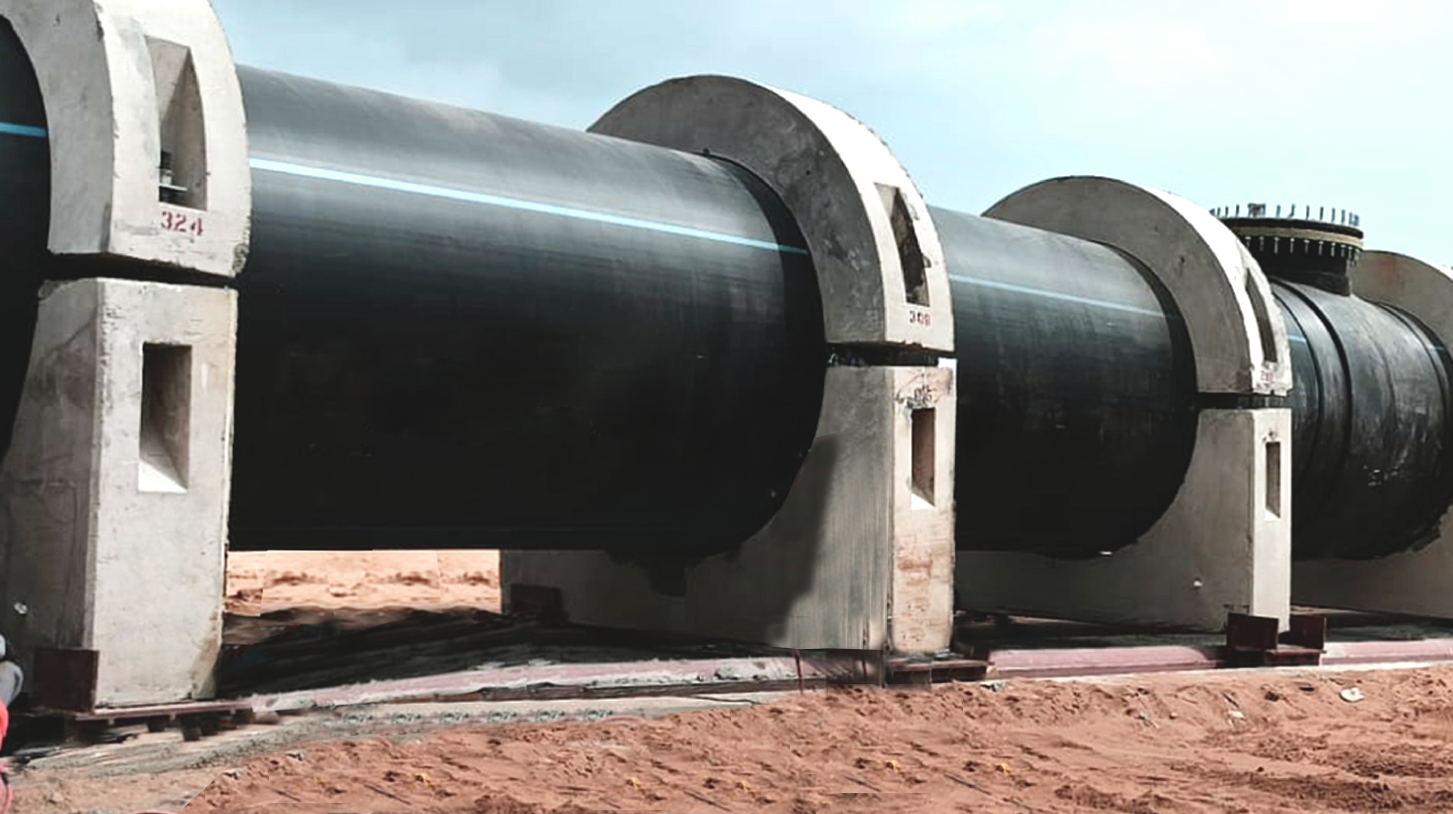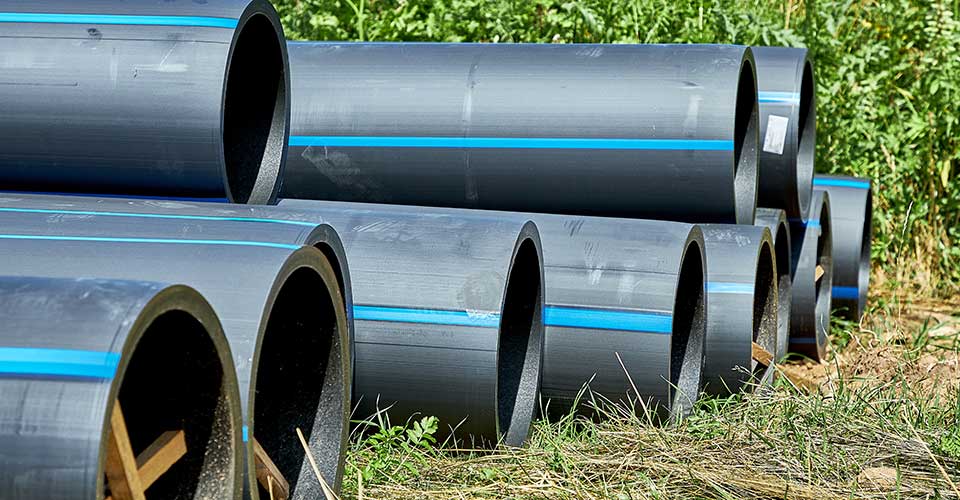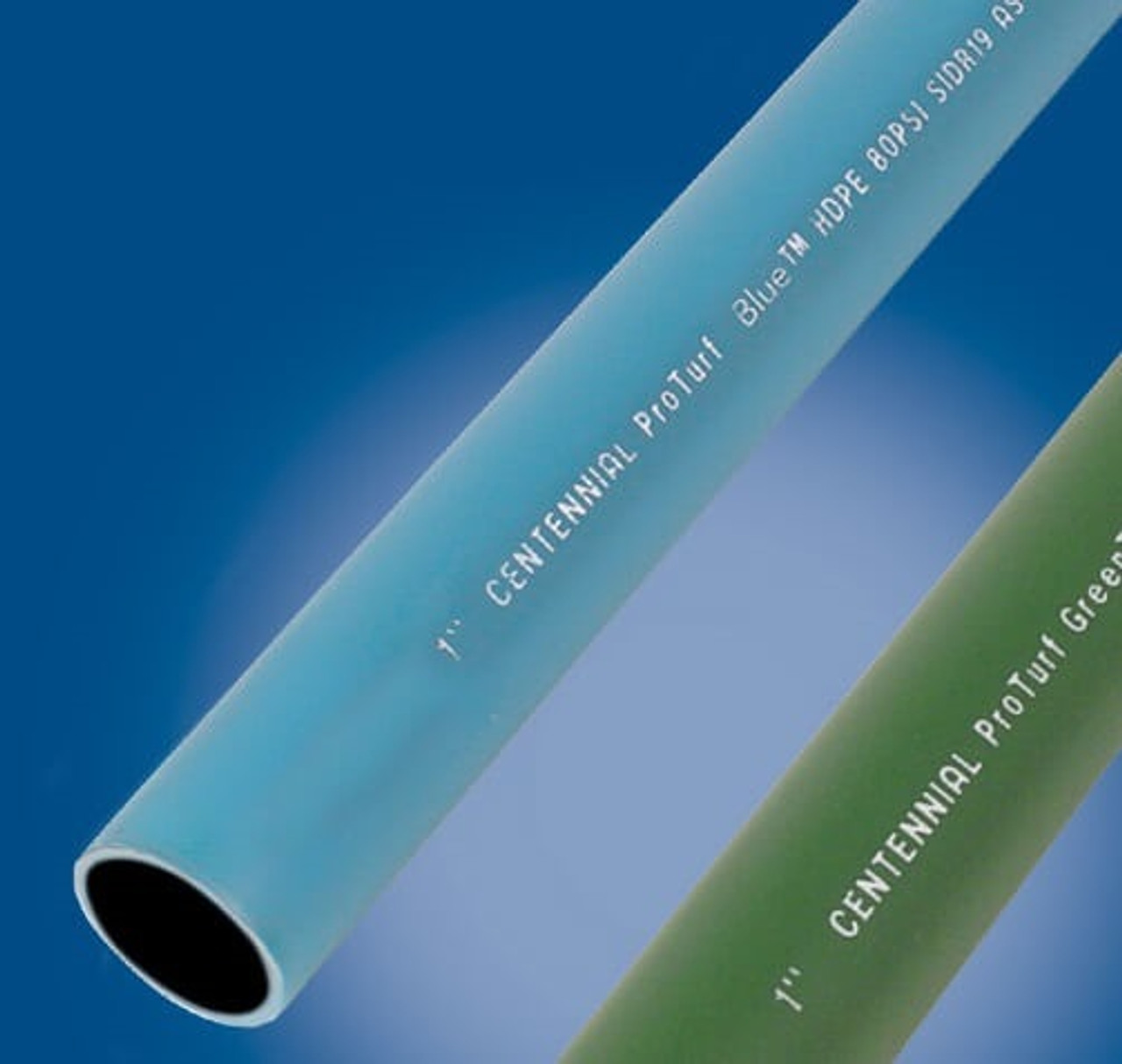Why hdpe pipe in stock Midland TX Is Essential for Local Industries
Explore the Production Refine Behind High-Quality HDPE Pipe and Its Applications
The production procedure of top quality HDPE pipes is detailed and systematic. It starts with the choice of raw materials that boost efficiency. Following this, ethylene undergoes polymerization to develop resin, which is then shaped via extrusion. Quality control is critical, guaranteeing that the end product satisfies stringent criteria. The journey of HDPE pipes doesn't end with production. Their applications across various sectors reveal a broader relevance worth taking a look at.
Understanding HDPE: Characteristics and Advantages

High-density polyethylene (HDPE) is a versatile thermoplastic recognized for its durability and resistance to various ecological aspects. This material displays exceptional tensile stamina, making it suitable for demanding applications. Its low-density structure adds to a light-weight item, assisting in simplicity of dealing with and setup. HDPE additionally showcases impressive resistance to chemicals, which reduces degradation when exposed to extreme substances.
The material's reduced dampness absorption additionally enhances its long life, making it excellent for usage in pipes and tank. Furthermore, HDPE is immune to ultraviolet (UV) radiation, ensuring that products keep their honesty even when subjected to sunshine. In addition, its flexibility permits the development of elaborate shapes without jeopardizing stamina. The environment-friendly nature of HDPE, typically obtained from recycled materials, adds to its appeal, promoting lasting techniques in production. On the whole, these homes and advantages make HDPE a preferred choice for numerous commercial and customer applications.
Raw Material Selection for HDPE Production
The option of resources for HDPE production is vital to verify the final item meets the desired requirements and top quality criteria. High-density polyethylene (HDPE) is mainly generated from polymerized ethylene, originated from fossil fuels such as gas or crude oil. The high quality of these feedstocks substantially affects the mechanical and thermal residential properties of the final HDPE.
Ingredients also play a considerable role in enhancing HDPE's performance, including anti-oxidants, UV stabilizers, and colorants, which enhance durability and resistance to environmental elements. The choice procedure should consider not just the chemical structure of the raw materials but additionally their processing attributes to ensure effective production.
The sourcing of raw materials need to prioritize sustainability and conformity with environmental guidelines, as responsible methods are imperative in today's market. Eventually, mindful basic material option lays the foundation for creating high-quality HDPE pipes ideal for diverse applications.
The Extrusion Refine: Forming HDPE Pipe
The extrusion procedure plays an important duty fit HDPE pipelines, beginning with careful product preparation strategies that guarantee excellent flow and uniformity. Equally vital is the style of the die, which directly influences the final measurements and surface area high quality of the pipe. With each other, these aspects add substantially to the effectiveness and quality of HDPE pipe production.
Product Prep Work Techniques
Efficient manufacturing of HDPE pipes starts with thorough material prep work strategies, especially the extrusion process. During this phase, high-density polyethylene material is very first dried out to get rid of dampness, making certain perfect flow qualities. The resin is after that fed right into the extruder, where it goes through heating and melting, transforming into a viscous state. This heating process is very carefully managed to preserve the material's integrity and efficiency. The liquified HDPE is required with a die, forming it right into a constant pipeline type. Proper temperature level monitoring during extrusion is necessary, as it straight affects the product's residential properties and the final item top quality. When shaped, the HDPE pipeline is cooled down and cut to specified sizes, prepared for subsequent handling and applications.
Die Style Value
Precision in die design plays an essential duty in the extrusion procedure of HDPE pipelines. The die acts as the final shaping tool, directly affecting the pipeline's measurements, wall surface thickness, and surface finish. A properly designed die warranties uniform product flow, minimizing flaws such as irregularities and vulnerable points. The geometry of the die need to be optimized to suit the certain properties of HDPE, including its thickness and thermal actions throughout extrusion. In addition, the cooling price of the product as it passes through the die can noticeably influence the pipe's architectural integrity. Subsequently, purchasing advanced die technology is vital for suppliers aiming to generate top quality HDPE pipes that satisfy market requirements and customer expectations.
High Quality Control Steps in HDPE Production
Various aspects affect the top quality of HDPE pipe manufacturing, efficient top quality control measures are essential to ensure uniformity and integrity in the last item (American Plastics HDPE Pipe Manufacturing). Trick quality assurance practices include rigorous material evaluation, verifying that kitchen tap hose connector the raw polyethylene satisfies well established standards for pureness and thickness. During the extrusion process, parameters such as temperature, pressure, and cooling time are closely kept track of to maintain dimensional accuracy and architectural honesty
On top of that, post-production screening is crucial; manufacturers frequently conduct hydrostatic examinations to analyze the pipeline's stamina and resistance to pressure. Aesthetic inspections for surface area problems better improve quality control. Certification from appropriate requirements companies, like ASTM or ISO, gives an added layer of integrity. By carrying out these extensive quality assurance procedures, manufacturers can lessen issues, enhance efficiency, and make certain that the HDPE pipelines satisfy the specific needs of various applications, inevitably causing client contentment and count on the item.
Applications of HDPE Pipe Across Industries
HDPE pipes are utilized throughout numerous markets due to their sturdiness and versatility. In water circulation systems, they guarantee reliable delivery, while in wastewater administration, they provide trustworthy services for waste transport. Furthermore, agricultural watering networks benefit from HDPE's resistance to deterioration and versatility, making it a perfect selection for contemporary farming techniques.

Water Distribution Solutions
A significant variety of markets count on high-density polyethylene (HDPE) pipes for reliable water circulation systems. Recognized for their longevity and resistance to corrosion, HDPE pipes are commonly used in community water system networks, agricultural watering, and industrial applications. Their lightweight nature promotes simple handling and installment, decreasing labor prices and time. Additionally, HDPE pipes can accommodate various stress levels, making them appropriate for both reduced and high-pressure systems. American Plastics HDPE Pipe for Oilfield. The adaptability of the product permits smooth assimilation right into existing framework, lessening the need for comprehensive excavation. HDPE's resistance to chemical seeping guarantees that the water supplied continues to be risk-free and clean, making it an excellent option for keeping the high quality of safe and clean water throughout different industries.
Wastewater Management Solutions
Efficient water circulation systems likewise lead the way for cutting-edge wastewater management remedies, where high-density polyethylene (HDPE) pipelines play a considerable duty. Popular for their longevity and resistance to corrosion, HDPE pipes are ideal for delivering wastewater in numerous setups. Their adaptability enables easy installment in intricate environments, minimizing the need for comprehensive excavation. In addition, HDPE's smooth indoor surface area lowers rubbing, enhancing circulation prices and performance. These pipelines are also resistant to chemical leaching, guaranteeing that impurities do not jeopardize the surrounding atmosphere. Industries, communities, and treatment facilities increasingly rely on HDPE pipelines for their integrity and long life, making them a favored option for contemporary wastewater management systems. This adaptability highlights the crucial importance of HDPE pipelines across many applications.
Agricultural Irrigation Networks
Agricultural irrigation networks profit significantly from using high-density polyethylene (HDPE) pipelines, which supply effective and trusted water delivery to plants. HDPE pipelines are lightweight, making them easy to carry and install, while their adaptability enables for various configurations in diverse terrains. These pipes demonstrate excellent resistance to deterioration, chemicals, and UV radiation, guaranteeing durability in severe farming atmospheres. Additionally, their smooth interior surface area lessens rubbing loss, enhancing water flow and decreasing power expenses related to pumping. The long life of HDPE pipelines, typically exceeding 50 years, adds to lower maintenance and replacement costs. Farmers significantly rely on HDPE pipes to boost watering performance and advertise lasting agricultural practices, inevitably leading to improved plant returns and source preservation.

Future Patterns in HDPE Pipe Modern Technology
As the demand for lasting and reliable facilities expands, developments in HDPE pipeline technology are poised to change various markets. Arising trends include the assimilation of smart innovations, such as sensing units and IoT capabilities, which promote real-time monitoring of pipeline problems, decreasing maintenance expenses and preventing leaks. In addition, the advancement of advanced production strategies, such as 3D printing, is enabling the manufacturing of complex, tailored pipeline designs that provide to details project needs.
Additionally, the concentrate on recycling and circular economic climate techniques is driving the development of HDPE pipelines made from recycled products, boosting sustainability. Enhanced jointing methods, such as electro-fusion and mechanical fittings, are additionally boosting installment performance and integrity. Ultimately, the expanding emphasis on ecological regulations is pushing producers to embrace greener production processes, making sure that HDPE pipelines not just satisfy industry requirements however likewise cultivate an even more lasting future for infrastructure growth.
Often Asked Concerns
Exactly How Does HDPE Contrast to Other Plastic Materials?
HDPE outmatches several other plastic products regarding durability, chemical resistance, and adaptability. Its low density and high tensile toughness make it excellent for various applications, usually going beyond choices in both efficiency and long life.
What Are the Ecological Impacts of HDPE Production?
The environmental effects of HDPE production consist of greenhouse gas discharges, power intake, and prospective pollution from producing procedures. Furthermore, improper disposal can lead to soil and water contamination, increasing issues concerning lasting environmental effects.
Can HDPE Piping Be Recycled?
Yes, HDPE pipelines can be recycled. Numerous centers accept used HDPE for handling, changing it into brand-new products. This reusing contributes to sustainability initiatives, minimizing plastic waste while conserving sources and power in the production cycle.
What Is the Life Expectancy of HDPE Water Lines?

Just How Do Temperature Level Variations Influence HDPE Pipeline Efficiency?
Temperature level variations considerably affect HDPE pipe performance, affecting adaptability and stamina. Heats can result in softening, while reduced temperature levels might cause brittleness, inevitably influencing the pipe's longevity and viability for different applications in varied environments.